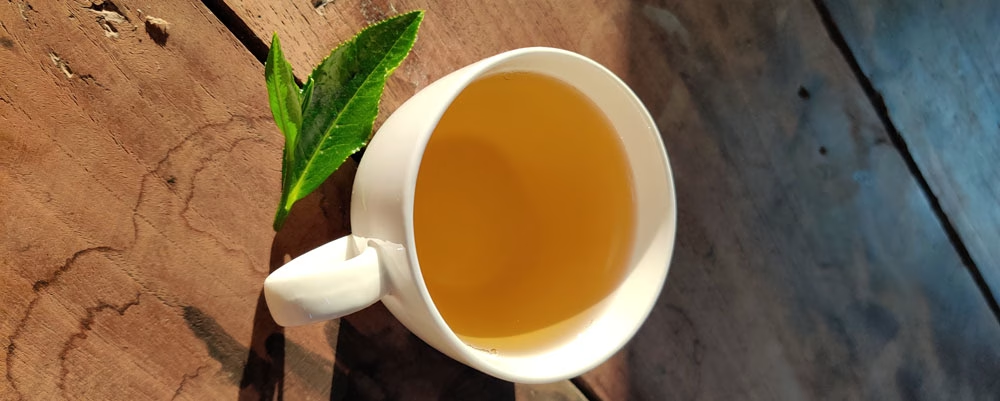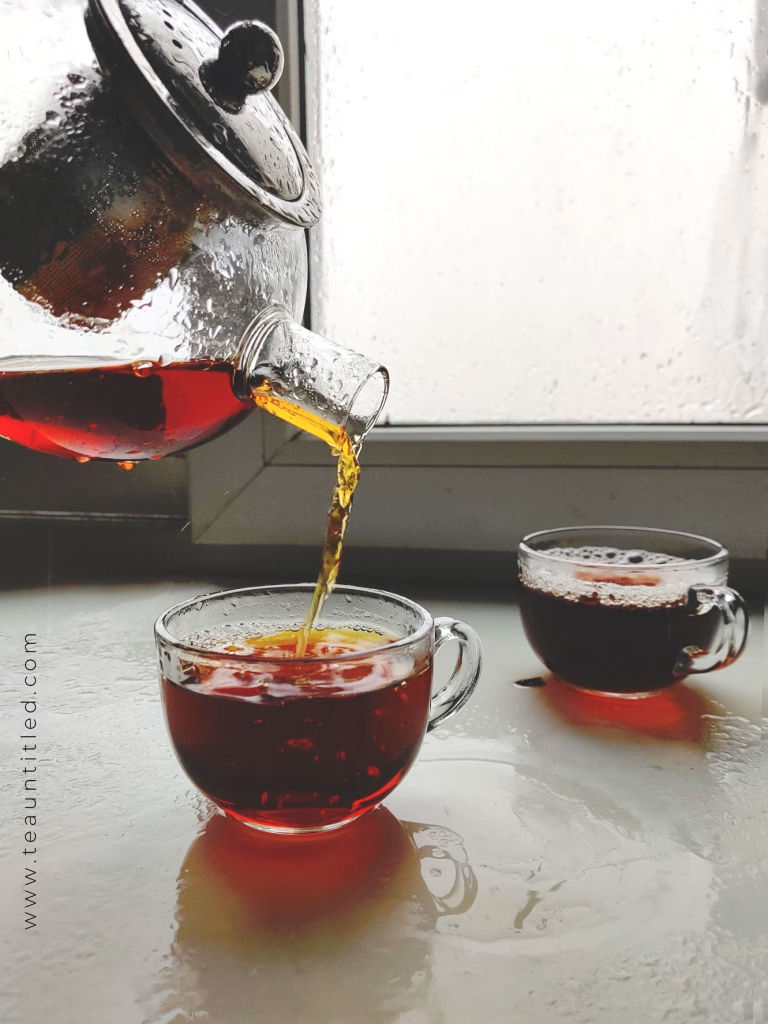From Steamy Inspiration to Literary Masterpieces
For centuries, tea has been more than a beverage; it has been a muse, a constant companion on the writer’s path. From the bustling streets of London to the serene tea houses of Japan, the fragrant steam of tea has fueled the creative fires of countless authors.
Imagine Leo Tolstoy, the literary giant who wrote epics like “War and Peace,” hunched over a desk in a dimly lit study. The rhythmic clinking of a spoon against a porcelain cup fills the void. Tolstoy declared, “I must drink lots of tea or I cannot work. Tea unleashes the potential which slumbers in the depth of my soul.” Tolstoy saw tea as more than just a drink; it was a key to the wellspring of his creativity. The concentrated energy provided by the tea leaves, perhaps aided by the gentle ritual of steeping and sipping, allowed him to delve into the depths of human experience and translate them onto the page.
Across the continent, another literary legend found inspiration in a teacup. Marcel Proust’s “À la recherche du temps perdu” (In Search of Lost Time) uses the seemingly mundane act of dipping a madeleine cookie in tea to trigger a flood of childhood memories. The famous passage says, “And suddenly the memory revealed itself. The taste was similar to a small piece of madeleine that my aunt Léonie used to give me on Sunday mornings at Combray (because I did not go out before mass), when I went to say good morning to her in her bedroom, after dipping it in her cup of tea or tisane.”
This simple gesture, steeped in the aroma and taste of tea, serves as a portal to the past, reminding us of the deep emotional connections we form through taste and smell. Proust’s work demonstrates how, in addition to its physical benefits, tea can act as a catalyst for introspection, bringing to light forgotten experiences that can enrich our writing
A Window into the Human
Condition:
Let us now travel to the drawing rooms of 19th-century England with Jane Austen, where teatime is more than just a refreshment break. It is the stage at which characters reveal themselves, relationships blossom, and plotlines unfold. Consider this scene from “Pride and Prejudice” where Elizabeth Bennet politely declines Mr. Darcy’s second cup of tea: “’May I offer you another cup of tea?’ ‘You are very kind,’ she murmured; ‘but I must decline.’ I have already had enough.” This seemingly simple exchange, fueled by tea service etiquette, reveals a delicate social dance between Elizabeth and Mr. Darcy, with underlying tension simmering just beneath the surface. Austen uses tea as a lens to investigate societal norms and the delicate dance of human interactions. Her work reminds us that inspiration can be found in the most unexpected places and that a simple cup of tea can provide insight into the complexities of human behavior.
Tea has the ability to inspire people across cultures and languages. In “Crime and Punishment,” Fyodor Dostoevsky portrays Raskolnikov, the guilt-ridden protagonist, seeking solace in a steaming cup of tea. The act of steeping and sipping becomes a brief respite from the crushing weight of his crime, a reminder that even in the darkest of times, simple pleasures can still exist. Similarly, Virginia Woolf, in “Mrs. Dalloway,” uses tea time to delve into the inner lives of her characters. The seemingly ordinary act of preparing and sharing tea becomes a window through which Woolf reveals the anxieties, desires, and connections that bind her characters together.
But tea’s influence goes beyond its literary footprint. It serves as a universal thread that connects people across the globe. More than just a beverage, it’s a shared experience.
Beyond the Cup: Inspiration in Every Steep
Tea has had a far-reaching literary impact, going beyond a few strategically placed scenes. The journey from leaf to cup, which is the essence of tea, can be used to represent the writing process. The careful selection of leaves, each with its own flavour profile, reflects the writer’s meticulous word choice. Green tea leaves, known for their subtle grassy notes, may inspire a writer to create a work of delicate imagery and nuanced emotions. Boldly flavoured black teas, on the other hand, may inspire a more assertive writing style, complete with strong verbs and vivid descriptions. The steeping process, which involves a patient wait for the perfect flavour to emerge, reflects the time and effort required to create a compelling story. Just as patience allows tea leaves to reach their full potential, a writer must nurture their ideas, allowing them to simmer and develop before committing them to the page. Finally, the infusion, which occurs when the tea is ready to be savoured, represents the finished product, a work of patience, selection, and artistry.
Many writers around the world recognise this parallel. The peaceful contemplation fostered by a cup of tea frequently serves as inspiration for Japanese haiku poems, which are known for their brevity and emphasis on nature. Matsuo Bashō, a master of haiku, wrote these lines that capture the essence of tea and its tranquility:
asa cha nomu / sō shizukanari / kiku no hana
For his morning tea / a priest sits down in utter silence– / confronted by chrysanthemums.
(Translated by Nobuyuki Yuasa)
A Steaming Muse that Knows No Borders
From the bustling tea houses of Asia to the cosy cafes of Europe, tea has long been a social lubricant. In Japan, the elaborate tea ceremony, known as Chanoyu, is a highly formalised ritual that fosters mindfulness and connection among participants. Every step, from the precise folding of a cleaning cloth to the respectful offering of sweets, carries deep meaning. It’s a conversation in gestures, a practice in mindful attention to detail and appreciation for the present moment.
Similarly, elaborate tea ceremonies are deeply woven into the social fabric of North Africa and the Middle East. The Moroccan mint tea ceremony, for example, is a social gathering used to welcome guests, celebrate special occasions, or simply connect with loved ones. The shared experience of pouring, brewing, and sipping tea fosters a sense of community and belonging.
When you raise a cup of tea to your lips, take a moment to appreciate its global journey. Remember, it’s not just a drink; it’s a cup brimming with shared humanity, a reminder of our interconnectedness, and a wellspring of inspiration waiting to be tapped.
A Metaphor for the Human Experience
Beyond the literal connections forged over steaming cups, tea is a powerful metaphor for the human experience. The journey of a tea leaf, from its cultivation on a distant plantation to its final infusion in a cup, mirrors our own journeys of development and transformation. Just as the leaves release their distinct flavours when steeped in hot water, our experiences shape who we are.
The act of steeping serves as a parallel for introspection and creativity. The patient wait for the perfect flavour to emerge reflects the time and effort required to create a compelling story or a profound idea. Finally, the moment the tea is ready to be enjoyed represents the finished product, the result of patience, selection, and a touch of artistry.
Whether you are sipping a delicate cup of green tea in a peaceful Japanese garden or sharing a robust pot of chai with friends in India, tea provides a moment of connection to something bigger than ourselves. It serves as a reminder that, despite our differences in
language, culture, and background, we all share a fundamental human experience. The simple act of drinking tea crosses borders and brings us together in a common appreciation for life’s beauty and complexity.
When you raise a steaming cup to your lips, take a moment to reflect on the global journey that brought that tea to you. It is more than just a drink; it is a cup of common humanity, a reminder of our interconnectedness, and a source of inspiration just waiting to be tapped.
Even authors known for their dystopian visions have found inspiration in tea. In his chilling novel 1984, George Orwell depicts a world in which Winston Smith, the protagonist, finds a fleeting moment of rebellion in a forbidden cup of tea obtained on the black market. The simple act of sharing this illicit tea becomes a symbol of resistance to the totalitarian regime. Tea, in this case, transcends its physical form to represent the human spirit is unwavering capacity for connection and the pursuit of simple pleasure.

Tea’s ability to inspire transcends cultures and languages, acting as a muse for writers from all walks of life. Imagine yourself curled up in a comfortable armchair, holding a steaming mug of chamomile tea. The soft tendrils of steam dance before your eyes, carrying the soothing scent of chamomile flowers. This simple act of brewing and sipping can serve as the catalyst for a meditative essay about the quiet beauty of everyday life. Or maybe you are drawn to the bold, robust flavour of black tea. The invigorating aroma and stimulating caffeine content can transport you to a world of action-packed stories, your fingers flying across the keyboard as you create scenes full of adventure and suspense.
The beauty is that the tea you select can become an extension of your creative process. Green tea, known for its subtle grassy notes and calming properties, could inspire you to write delicate character studies or introspective poetry. Herbal teas, with their diverse flavours and aromas, can provide a comparable level of personalisation. Perhaps a cup of lavender tea, known for its stress-relieving properties, would be ideal for tackling a difficult piece of writing that requires laser focus and emotional clarity.
The ritual of preparing tea becomes a pillar of creative productivity. The act of measuring leaves, heating water, and patiently waiting for the perfect brew promotes focus and relaxation. The rhythmic whistling of a kettle, the gentle clinking of a spoon against a mug—these seemingly insignificant sounds become a soothing soundtrack to your creative journey. The very act of steeping tea mirrors the writing process itself. Just as the leaves gradually release their flavour into the water, your ideas simmer and develop before making their way onto the page.
So, the next time you are staring at a blank page and looking for inspiration, do not underestimate the power of a simple cup of tea. Step away from the screen and make yourself a cup that reflects your mood and creative goals. Allow the aroma to entice your senses, the warmth to calm your spirit, and the bubbling in the pot to serve as a soundtrack for your creative awakening. Remember, the muse you seek may be waiting for you at the bottom of your cup.







